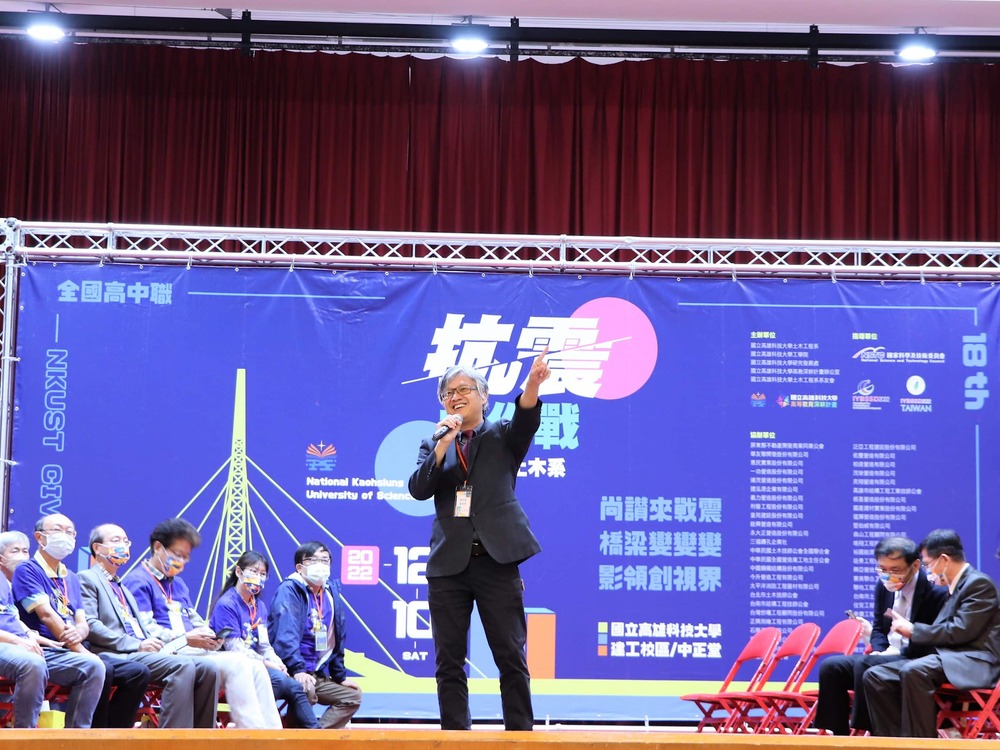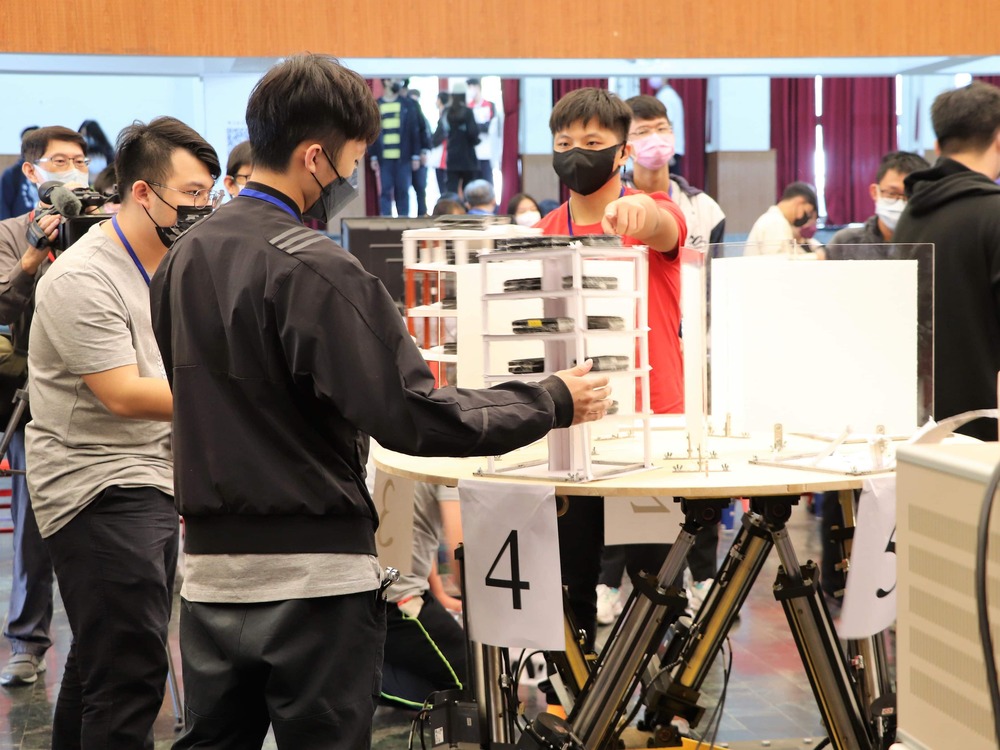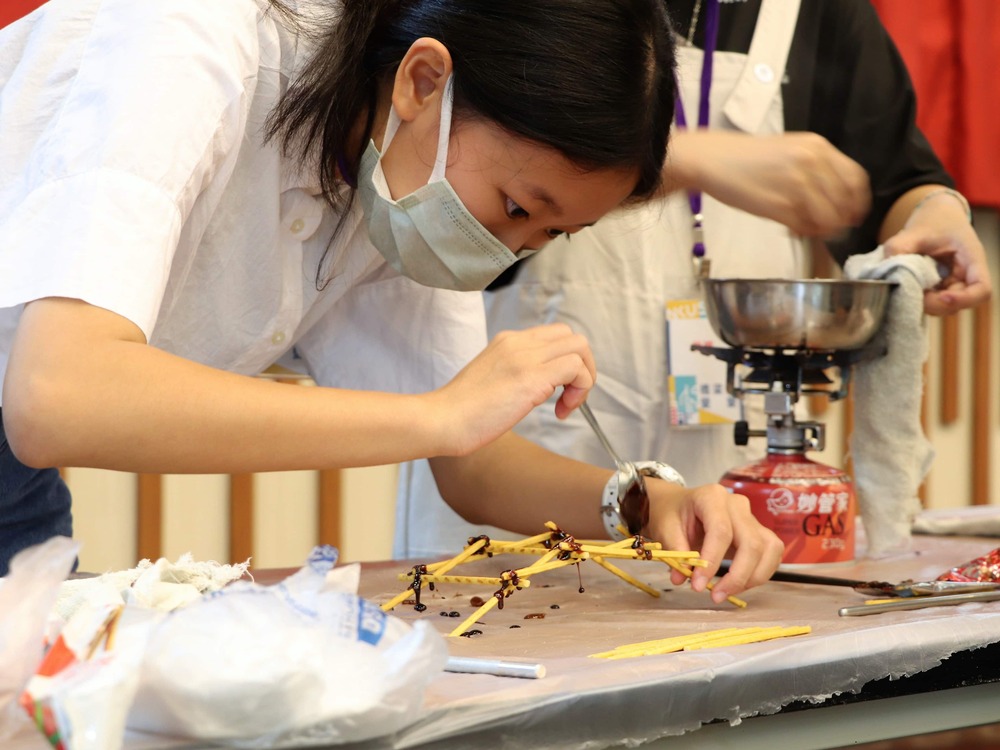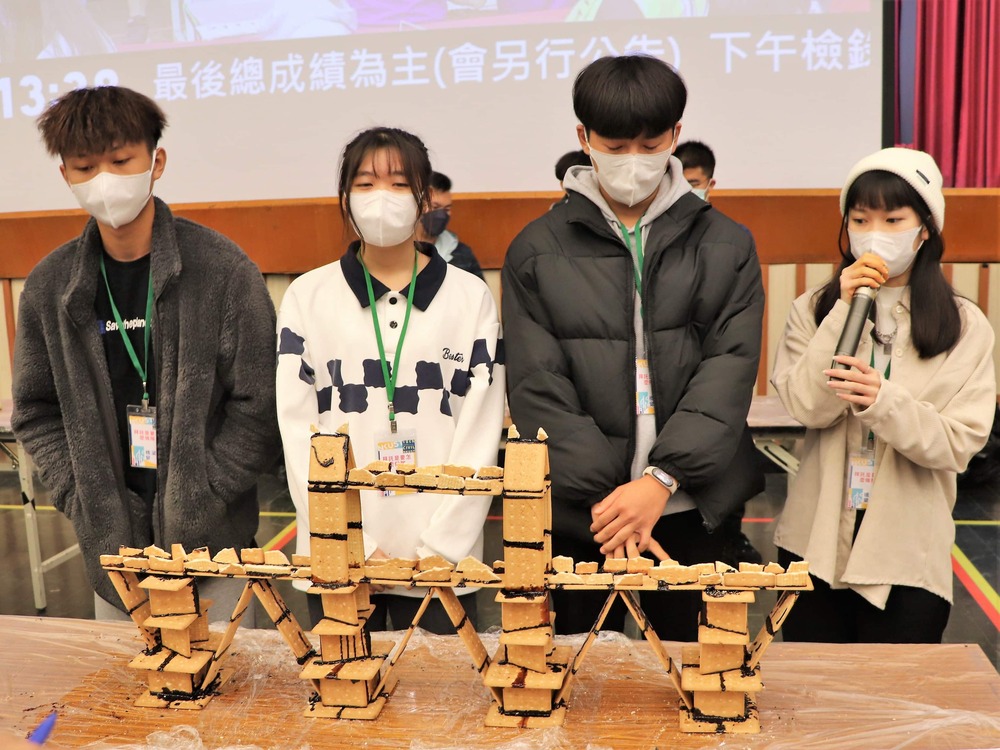2022 CE Aseismatic Design Competition: Revival of Food Bridge Match




Release Date 10 Dec 2022 Mandarin
The Civil Engineering Department (CE)’s annual Aseismatic Design Competition is a longstanding tradition at the department and has been held for 18 consecutive years since 2005.
The competition was hosted at Jiangong Campus on Saturday, Dec 10. It contained three categories: anti-seismic, bridge-building, and microfilm.
The highlight of the contest was the bridge building, which was particularly well-suited to stoking young creative minds, and each team was required to design a bridge model made from food ingredients.
In the anti-seismic category, the champion went to Oden with the fried instant noodles team from TCIVS. In the bridge-building, how do we do that team from SSLVS won Best Creative Award, and TCAVS won the Best Narration Award.
The competition was also one of CE’s annual events, which CE alumni and students of high schools or vocational high schools valued.
As next year would be CE’s 60th anniversary, the department invited a young alumnus, Chen, Chao-Tsun (陳昭村), as a contest judge, hoping young professionals pass their experiences to students.
While studying in the master’s program, Mr. Chen has taken exams for senior civil service for three consecutive years and has passed them all. In his second year of graduate school, he passed the exam and got a license as a structural engineering technician.
After graduating, he obtained a civil engineering technician license. What’s more, he was the first student of the University to receive the Outstanding Vocational Student Award.
CE Chair Kuo, Wen-Ten (郭文田) stated: “This year is the International Year of Basic Sciences for Sustainable Development (IYBSSD 2022). The department receives subsidies from the National Science and Technology Council (NSTC) to support the competition, which is part of important events of IYBSSD 2022.”
Civil engineering is the foundation industry of a country, but it can also be the main force to promote sustainability.
The competition involved the category of bridge building. Students have to create bridges based on the theme. Last year, it was the beauty and strength of bridges. The organizer selected an old theme this year, using food ingredients to design bridges.
Each team could spend up to NT$500 buying their ingredients as materials for bridge building in supermarkets, convenience stores, or wet markets near the University.
For the bridge-building category, all contestants needed to use food ingredients to build a bridge with three piers and two bridge decks; the distance between the two piers needed to be 15 cm.
One thing that was common among all teams was using sugar as an admixture to reinforce the strength and connections between each material.
The sweet scent of caramelized sugar engulfed the air all over the venue. The sweet heat of the bridge-building category showed a significant contrast with teams competing tensely for the anti-seismic category next to them.
Apart from hard skills, it has become a trend for recent competitions to emphasize the soft skills of young participants, such as submitting microfilm or briefing teams' works to the public. These tasks required students consider points of view that might call into question their fundamental concepts. Moreover, students should think about how to express their ideas with skill in proper manners adequately.
As student participants were of related fields, they designed a food bridge in a contest but may create a concrete bridge in the future. The match was an excellent opportunity for them to have hands-on experience.
The competition attracted 171 teams of 41 departments from 36 high and vocational schools. Huang, Chung-Fah (黃忠發), Associate Dean for the College of Engineering came out to lend his support to all contestants. He cheered for their success and welcomed young students to become a part of the University in the future.
Translated/Edited by Jess Lin
